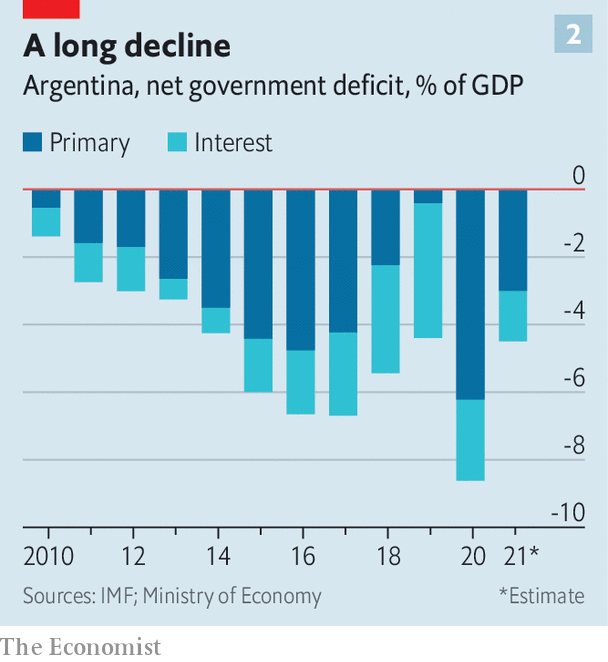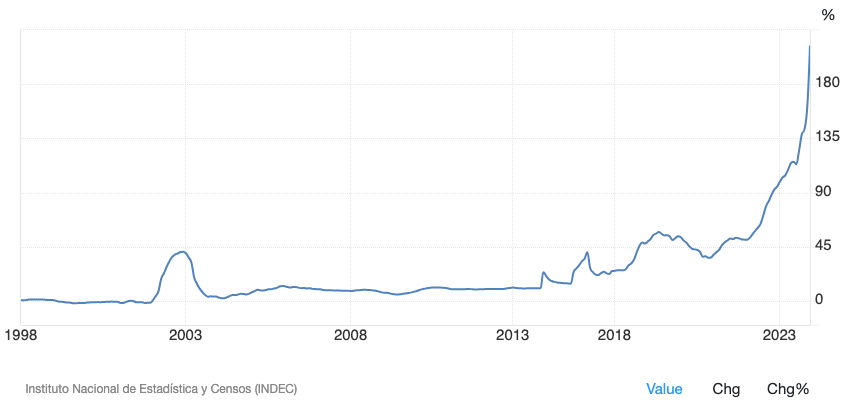Debt crises
| Reading: Blustein, P., 2005, “And the Money Kept Rolling In” Public Affairs (pp.39-60)
Discussion question: As of July 1998 should the IMF suspend their program in Argentina, or continue their support? |
Textbook Reading: Chapter 8 (Section 8.3; pp. 278-280) and Chapter 10 (Section 10.4; pp. 357-366)
Although I use Chapter 3 as the pre reading for this class, I highly recommend the full book: “And the Money Kept Rolling In (and Out)”. Here’s The Economist’s summary. To better understand the dynamics of a sovereign debt crisis, use this model from The Economist.
| Instructor Resource: “Argentina: What Happened Next?” January 2014 |
Argentina’s default in 1998 reveals some downsides to convertibility, such as the fact that Argentina was being affected by US monetary policy. But convertibility had long been abandoned – after all Argentina had engaged in exchange rate controls to boost exports; were holding Argentinian government bonds as reserves (not just USD); and providing lender of last resort services to domestic banks.
Ultimately I think we can point to several key problems:
- High growth rates masking the deficit and debt problems – which possibly generated a lot of hubris
- The “sudden stop” reversal of capital flows due to Russia’s default in 1998
- Fiscal policy being too loose in the 90s (when they should have been running a surplus) but then too tight in 2000/1
- Post child syndrome affecting the incentives of both Argentina and the IMF
What’s happened in Argentina since?
From 2007-2015 Argentina’s President Cristina Kirchner over saw a steadily increasing budget deficit.

Here’s what has happened to inflation in Argentina since 1998:

When Javier Milei became President of Argentina in December 2023 there was lots of discussion about how he would fix monetary issues. Several economists have advocated dollarisation and the abolishment of the central bank. For example:
- Greenwood, J., Hanke, S., and Zalles, F., “Dollarize Argentina; Abolish the BCRA” Studies in Applied Economics, Johns Hopkins, November 2023
- “How to Dollarize Argentina” by Nicholas Cachanosky, October 9th 2023
- “Pro Dollarization” by John Cochrane, November 14th 2023
| Activity: Complete the Stock Market Crash worksheet |
Recommended audio
In this podcast Rasheed Griffith interviews Manuel Hinds, the former Finance Minister of El Salvador, and the man who designed their 2000 dollarization policy.
A 2016 episode of the podcast Planet Money looked at sovereign debt crises, and is well worth a listen. The title was “A Hedge Fund, A Country, And A Big Sailboat“. In 2023 they followed up with “A black market, a currency crisis, and a tango competition in Argentina” which I also recommend.
I also recommend listening to Tyler Cowen’s interview with Pierpaolo Barbieri, the CEO of Uala, where they discuss Argentina’s reforms as well as a broader look at the Latin American start up prospects and culture (start at 22:55).
Recommended reading
- Escolano, J., “A Practical Guide to Public Debt Dynamics, Fiscal Sustainability, and Cyclical Adjustment of Budgetary Aggregates“, IMF, January 2010
For a thorough account of how the IMF conducts their support plans, see:
- Mussa, M., and Savastano, M., 1999, “The IMF approach to economic stabilization”, NBER Macroeconomics Annual, Vol. 14, pp. 79-122
| Lecture handout: Financial Stability* |
The key goal for monetary authorities is credibility: [Credibility flashcard]
What constitutes an optimal currency areas? [Optimal Currency Areas flashcard]
| Learning Objectives: Understand the causes of a sovereign debt crisis. Understand the role international agencies play in managing a debt crisis.
Focus on diversity: The highly influential paper on sovereign debt tipping points was co authored by Carmen Reinhart, a Cuban-born economist who became Chief Economist of the World Bank in 2020. |